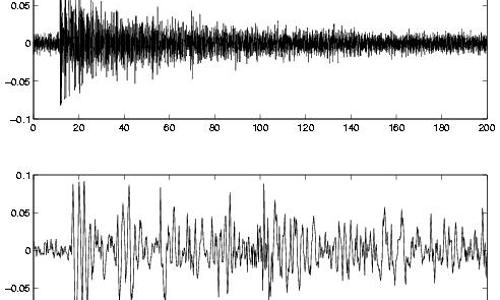
This directory lists impulse responses measured inside a plywood cube. The cube is six feet front to back, six feet top to bottom, and 5’10.5″ left to right (+/- 2mm).
The impulse response was measured using a pseudo-noise waveform of length 65536 samples, equal to 1.48 seconds at 44.1kHz. The waveform was repeated 100 times: the VERY LONG input file is here. For each of the 100 iterations, the frequency response of the room was measured by dividing the FFT of the recorded signal by the FFT of the input noise signal, i.e. H(:,i)=Y(:,i)./X(:,i), Haverage=average(H). The FFT X is designed to be unity everywhere; the phase of X is uniformly distributed between -pi and +pi.
Microphone signal was recorded at four positions along a line drawn down the middle of the room. All microphone positions were 56.25 inches above the floor, midway between the left and right walls. Position 1 is 5″ from the back wall, Position 2 is 16″, Position 3 is 26″, Position 4 is 36″.
Speakers are flat panels 5″ wide, 5.5″ tall, mounted on the 4 corners
of the left and right walls. Speaker surfaces are 7/8″ away from the
walls (left-right). Top of the upper speakers is 1.25″ below the
ceiling. Bottom of the lower speakers is 1.5″ above the floor.
Horizontal distance from a speaker edge to the wall is 0″ to 0.5″
(forward-backward). Speakers are numbered as follows:
capture1: front left bot
capture2: front left top
capture3: front right bot
capture4: front right top
capture5: back left bot
capture6: back left top
capture7: back right bot
capture8: back right top
The data are available in this TGZ file.